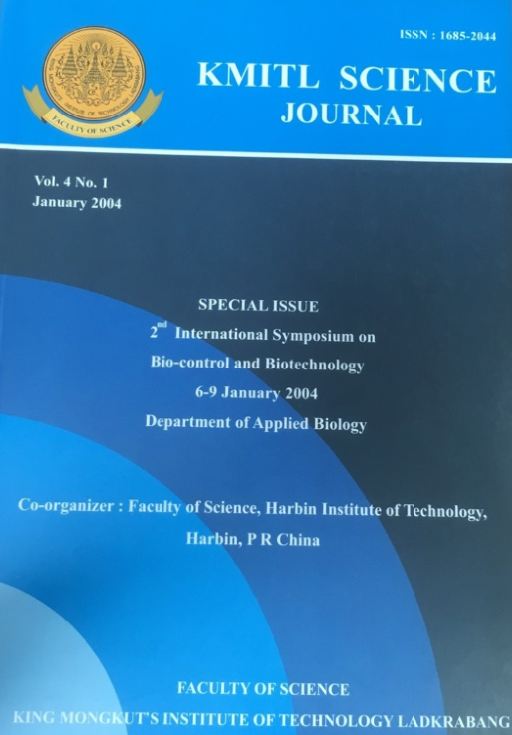Factors Determining the Adoption of Pruning and Bagging by Major Mango Producers in the Philippines
Main Article Content
Abstract
A total of 332 mango growers and contractors were interviewed about their attitude towards pruning and bagging. Grouped as adopters and non-adopters, the respondents were categorized as to age, experience in mango production, educational attainment, household income, and membership to organization. These characteristics along with economic, physical, technological and institutional factors were analyzed using probit analysis to determine their influence on the probability of adopting the technologies.
Trees grown in Luzon and Visayas were older than those in Mindanao, hence the negative effect on adoption of pruning and bagging. With regard to pruning the coefficient for number of trees grown was positive, indicative that respondents with a higher number of trees had a higher probability of adopting pruning.
Seven variables were found to have significant influence on the probability to adopt bagging among all respondents. The presence of technical assistance was the most significant predictor. In areas where technical assistance could not be adequately provided mango growers would remain ambivalent on adopting the bagging technology. The rate of adoption was higher in Visayas and Mindanao than in Luzon. A separate function for Luzon showed that the age and education of the respondents were negative and positive, respectively, contrary to the result of the adoption function for all respondents. Two other important determinants were household income and cost of chemical control. The coefficients were positive, as expected a priori. Bagging is expensive, thus, producers with more income have higher probability of adoption. Adopting will further be enhanced if the price of chemical control will continue to increase in the local market. Thus, pricing mechanism that would make the cost of chemical control more expensive relative to the cost of bagging could be an important instrument to increase bagging adoption.
Keywords: pruning, bagging, mango, adoption, determinants of adoption, probit analysis
Corresponding author: E-mail: cast@kmitl.ac.th
Article Details
Copyright Transfer Statement
The copyright of this article is transferred to Current Applied Science and Technology journal with effect if and when the article is accepted for publication. The copyright transfer covers the exclusive right to reproduce and distribute the article, including reprints, translations, photographic reproductions, electronic form (offline, online) or any other reproductions of similar nature.
The author warrants that this contribution is original and that he/she has full power to make this grant. The author signs for and accepts responsibility for releasing this material on behalf of any and all co-authors.
Here is the link for download: Copyright transfer form.pdf
References
[2] H. BHANDARI, The economics of groundwater irrigation in rice-based system of Terai of Nepal. Ph.D. dissertation. University of the Philippines Los Banos. Laguna, 1990.
[3] N. KHONGROD, Communication analysis of sweet tamarind (Tamarindus indica L.) technology utilization in Phetchabun, Thailand. Ph.D dissertation, Central Luzon State University, Sceince City of Muñoz, Nueva Ecija, 2003.
[4] M.E.M. ORDEN, Economic effects of pesticide regulation and farmers’ education on rice production in Nueva Ecija, Philippines. Ph.D. dissertation. University of the Philippines Los Banos. College, Laguna, 2002.
[5] S.P. REGMI, Economic analysis of adoption of contour hedgerow practices by upland farmers in Claveria and Cebu, Philippines. MS thesis. University of the Philippines Los Banos. College, Laguna, 1997.
[6] B.E. UMALI, Knowledge and practices of and attitude toward mango (Mangifera indica L.) Technology among producers in Luzon, Philippines. PhD dissertation, University of the Philippines Los Banos. College, Laguna, 1999.
[7] C.C.DAVID, Constraints to food security: The Philippines case. PIDS Discussion Paper Series No. 99-31, 1999.
[8] P.B.SHAKYA and J. C. FLINN, Adoption of modern rice and fertilizer use in eastern Terai of Nepal. Department of Agricultural Economics Paper No. 84-15. IRRI., 1984.
[9] S.K.SHAH, Communication analysis of farmers technology utilization through T and V systems in Janakpur Zone, Nepal, 1989.
[10] D.N. GUJARATI, Basic Econometrics, 2nd Edition(McGraw Hill, New York, 1988.)
[11] R.S. PINDYCK and D.L. RUBINFELD, Economic models and economic forecasts, 3rd Edition (McGraw Hill, New York, 1991.)
[12] W.B. WHALE, Technology transfer revisited: changing practices foundations and changing practices in extension. D.J. Blackburn (ed.), (University of Guelph, Ontario, Canada, 1989.)
[13] J.D. THORNHOM, G.N. NORTON, K.L. HEONG, N.S. TALEKAR, and V.P.GAPUD. Determinants of pesticide misuse in Philippines onion production. Philip. Ent. 11(2), 1997, 139-149.


